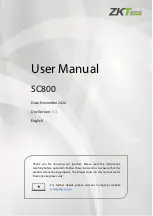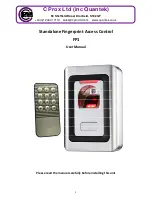
26
Connect the CCN Communication Bus —
The
fan coil controllers connect to the bus in a daisy chain arrange-
ment. The fan coil controller may be installed on a primary
CCN bus or on a secondary bus from the primary CCN bus.
Connecting to a secondary bus is recommended.
At any baud (9600, 19200, 38400 baud), the number of con-
trollers is limited to 239 zones maximum. When Carrier link-
age thermostats are used on the same bus as fan coil units, no
more than 128 fan coils and 12 linkage thermostats may be on
the same bus. Bus length may not exceed 4000 ft, with no more
than 60 total devices on any 1000-ft section. Optically isolated
RS-485 repeaters are required every 1000 ft.
NOTE: Carrier thermostats operate at 9600 band.
The first fan coil controller in a network connects directly to
the bridge and the others are wired sequentially in a daisy chain
fashion. Refer to Fig. 32 for an illustration of CCN Communi-
cation Bus wiring.
The CCN Communication Bus may also connect to the fan
coil controller space temperature sensor. Refer to the Install
Sensors section for sensor wiring instructions.
COMMUNICATION BUS WIRE SPECIFICATIONS —
The Carrier Comfort Network (CCN) Communication Bus
wiring is field-supplied and field-installed. It consists of
shielded three-conductor cable with drain (ground) wire. The
cable selected must be identical to the CCN Communication
Bus wire used for the entire network. See Table 3 for recom-
mended cable.
Table 3 — Recommended Cables
NOTE: Conductors and drain wire must be at least 20 AWG
(American Wire Gage), stranded, and tinned copper. Individual con-
ductors must be insulated with PVC, PVC/nylon, vinyl, Teflon, or
polyethylene. An aluminum/polyester 100% foil shield and an outer
jacket of PVC, PVC/nylon, chrome vinyl, or Teflon with a minimum
operating temperature range of –20
C to 60
C is required.
CONNECTION TO THE COMMUNICATION BUS
1. Strip the ends of the red, white, and black conductors
of the communication bus cable.
2. Connect one end of the communication bus cable to
the bridge communication port labeled COMM2 (if
connecting on a secondary bus).
When connecting the communication bus cable, a
color code system for the entire network is recom-
mended to simplify installation and checkout. See
Table 4 for the recommended color code.
Table 4 — Color Code Recommendations
3. Connect the other end of the communication bus cable
to the terminal block labeled CCN in the fan coil con-
troller of the first air terminal. Following the color
code in Table 4, connect the Red (+) wire to Terminal
1. Connect the White (ground) wire to Terminal 2.
Connect the Black (–) wire to Terminal 3.
4. Connect additional fan coil controllers in a daisy chain
fashion, following the color coded wiring scheme in
Table 4. Refer to Fig. 32.
NOTE: The communication bus drain wires (shield) must
be tied together at each fan coil controller. If the communi-
cation bus is entirely within one building, the resulting con-
tinuous shield must be connected to ground at only one
single point. If the communication bus cable exits from one
building and enters another building, connect the shields to
ground at a lightning suppressor in each building where the
cable enters or exits (one point only).
MANUFACTURER
CABLE PART NO.
Alpha
2413 or 5463
American
A22503
Belden
8772
Columbia
02525
SIGNAL TYPE
CCN BUS WIRE
COLOR
PLUG PIN
NUMBER
+
Red
1
Ground
White
2
–
Black
3
CCN
1
2
3
CCN
1
2
3
CCN
1
2
3
CCN
1
2
3
COMM
1
2
3
GND
1000 FT. MAXIMUM
DRAIN WIRE (TYP)
BLK (TYP)
WHT (TYP)
RED (TYP)
FCC
FCC
FCC
FCC
BRIDGE
(RECOMMENDED)
LEGEND
Fig. 32 — Communication Bus Wiring
CCN —
Carrier Comfort Network
FCC —
Fan Coil Controller
















































